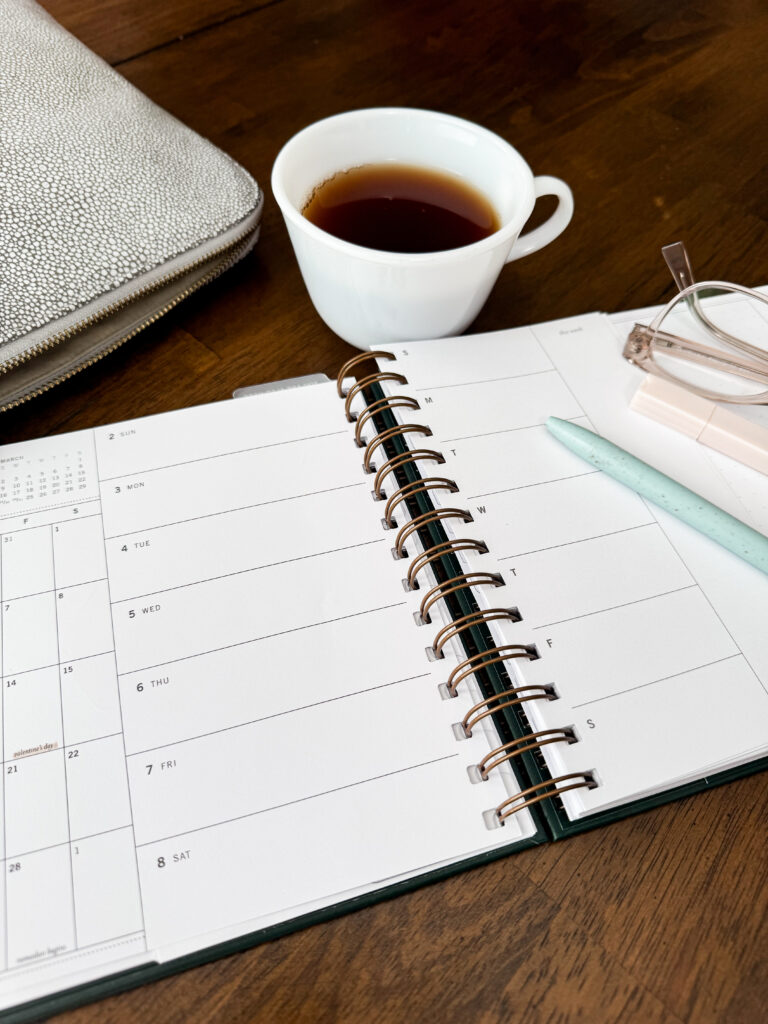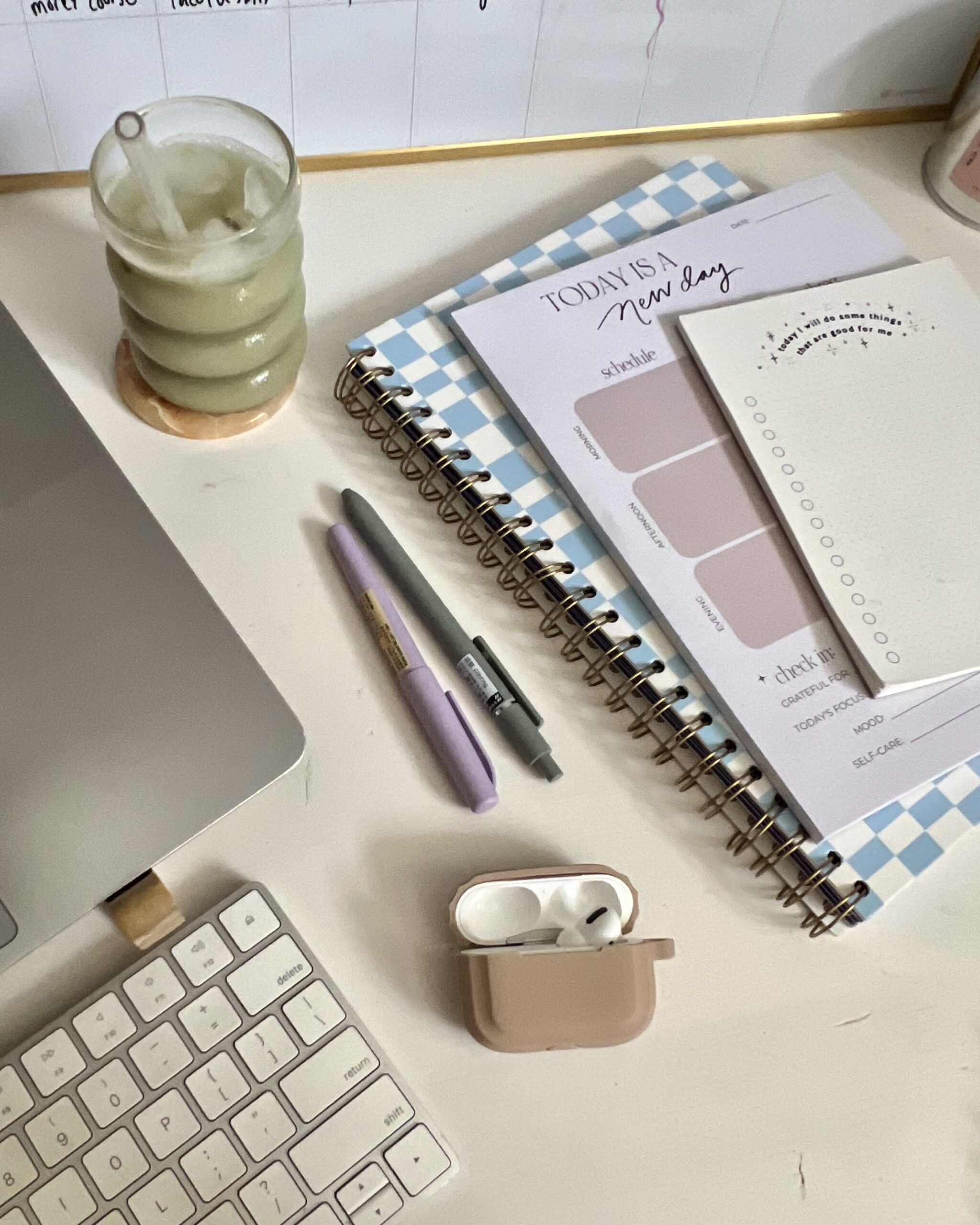How to Design a Daily Routine That Supports Wellness and Productivity
There was a time when I felt like I was juggling too many things at once—trying to grow a business, stay present for my family, recover from a traumatic brain injury, and still somehow “do it all.” I’d wake up feeling like I was already behind. No real rhythm. No structure. Just chaos, stress, and survival mode. Sound familiar?

Everything started to shift when I began treating my day like a sacred space rather than a to-do list. I created a routine that gave me breathing room, focus, and flexibility. It wasn’t perfect—but it was intentional. That shift changed everything.
Creating a daily routine isn’t about being rigid or robotic. It’s about designing a life that supports the way you want to feel and the goals you want to reach.
Creating a daily routine is a framework that can greatly improve your general productivity and well-being. It’s not just a means of planning your day. A well-organized routine gives your life a feeling of consistency & predictability. This enables you to concentrate on what really matters without becoming overwhelmed by the chaos of everyday life, which can be especially helpful during stressful or uncertain times.
Key Takeaways
- Establishing a daily routine is important for maintaining consistency and structure in your life.
- Identifying personal wellness and productivity goals helps you stay focused and motivated.
- Creating a balanced schedule allows you to allocate time for work, leisure, and self-care.
- Incorporating healthy habits into your routine, such as exercise and proper nutrition, is essential for overall well-being.
- Setting priorities and managing your time effectively helps you stay organized and productive.
Why a Routine Really Matters
Planning your day isn’t just about getting more done—it’s about creating more peace. When your day has structure, your mind has space to focus. You’re not constantly reacting to what’s coming at you; you’re intentionally moving through your priorities.
Having a routine helps you manage your time and energy more efficiently. It helps build habits that support long-term goals, like improved health, deeper focus, or more time with loved ones. Small, repeated actions—like journaling, stretching, or even hydrating—stack up into real progress.
You can more efficiently manage your time and energy by planning your day, which will enhance your emotional fortitude and mental clarity. Also, you can develop healthy habits that support your long-term objectives by following a clearly defined routine. You can reinforce the behaviors that lead to success by regularly participating in activities that support your goals. For example, making regular exercise a part of your daily routine can help you reach your goal of physically improving your health. These modest, regular acts add up over time to produce notable advancements.
Start with Clear Goals
Therefore, the first step in designing a life that aligns with your values & goals is realizing the significance of a daily routine. Make Your Goals Clear. By making your goals clear, you can modify your routine to suit your needs. To make your goals easier to monitor and more concrete, think about putting them in writing. After you have a firm grasp on your objectives, divide them up into manageable chunks.
Establish quantifiable goals. If your goal is to work out more, for instance, decide what kinds of activities you enjoy doing and how many days a week you want to work out. Similarly, consider the particular tasks or projects that need your attention if you want to increase your productivity. Measurable milestones allow you to track your progress and modify your routine as needed, keeping you in line with your goals. Continue to pursue your goals. A daily routine that genuinely supports your productivity and well-being goals can be established by establishing specific goals and breaking them down into manageable steps.
To stay on course and accomplish your goals, don’t forget to periodically assess your progress and make necessary corrections. Maintaining productivity and well-being requires a well-balanced schedule. Work, exercise, social interactions, and relaxation should all be incorporated into a well-rounded routine. Begin by organizing your day into time slots for various tasks. This will enable you to see how your time is spent and spot any areas that might require modification.

Build a Balanced Day
A solid routine balances work, rest, movement, connection, and joy. Start by blocking out your day into segments: mornings, work time, meals, movement, evenings, etc.
Then create time blocks for your top priorities. Don’t forget to build in short breaks, buffer time, and flexible “white space” for whatever life throws your way.
Try:
- Morning routine (quiet time, coffee, movement, planning)
- Focus time (work, creative projects, study)
- Midday recharge (walk, lunch, reset)
- Afternoon work block
- Evening wind-down (dinner, family, reading, gratitude)
The point isn’t perfection—it’s intentionality.
Throughout the day, make sure to schedule breaks; these are crucial for replenishing your body and mind. In addition to planning your day, think about how important schedule flexibility is. Because life is unpredictable, you may need to take a break from your planned activities or encounter unforeseen circumstances. You can adapt without feeling overburdened or bad about going from your original plan if you give yourself some leeway in your routine. You can keep up a routine that supports your productivity and well-being objectives by finding a balance between structure & flexibility.
Infuse Wellness into Your Routine
To promote long-term wellness, it is essential to incorporate healthy habits into your daily routine. Find minor adjustments that can have a big effect on your general health first. For example, think about increasing the amount of fruits and vegetables in your meals or making a commitment to stay hydrated throughout the day.
These seemingly small changes can result in increased vitality and better health in general. An additional crucial element of a healthy regimen is physical activity. Try to find a form of exercise that you truly enjoy, whether it’s strength training, yoga, running, or dancing. You’re more likely to continue engaging in activities over time if you choose ones that you enjoy. Also, think about adding mindfulness exercises like deep breathing or meditation to your daily regimen.
By lowering stress and improving mental clarity, these techniques can support a more balanced way of living. The secret to reaching your productivity and well-being objectives is efficient time management. Begin by determining which of your daily responsibilities are most crucial and setting priorities for them.
Wellness doesn’t need to be complicated. Small actions, done consistently, create meaningful change.
- Add more fruits, veggies, and hydration to your meals.
- Take screen-free breaks to reset your mind.
- Choose movement you love—yoga, dancing, walking, lifting—whatever feels fun.
- Try a 3-minute mindfulness break before transitions.
When your body feels better, your mind works better. When your mind feels clear, your day flows with more ease.

Use Time Management Tools That Work for You
Utilize digital planners or to-do lists as tools to help you stay on top of your tasks. Prioritizing high-priority tasks will help you manage any less urgent obligations while simultaneously ensuring that you’re moving closer to your objectives. Think about the idea of time blocking in addition to setting task priorities.
This method entails setting aside particular time slots for various tasks throughout the day.
You can increase your productivity and reduce distractions by setting aside unbroken time for concentrated work or personal projects.
Keep in mind that flexibility is crucial; don’t be afraid to modify your schedule if an urgent situation comes up or if you discover that you need more time for a specific task.
Whether you love digital planners or paper lists, use a tool that supports your style.
- Prioritize 3 key tasks daily
- Try time-blocking: schedule tasks into specific time windows
- Leave room for rest and “off” time
- Use reminders or timers to stay on track
The goal is not to pack your day full—it’s to be intentional with your energy.
Create Space for Joy & Rest
Make Time for Happiness & Rest. Prioritize making time in your calendar for enjoyable and restorative activities. Engaging in self-care activities such as reading a book, taking a warm bath, or going for a leisurely walk in the outdoors can help you feel better & recharge your energy.
Make relaxation exercises a part of your everyday routine. Take into account adding relaxation methods to your everyday schedule. In the midst of a hectic day, exercises like yoga or meditation can offer helpful breaks. Your mood can be greatly improved by simply setting aside a short period of time each day to center yourself and take deep breaths.
Put Yourself First for a Better Life. Prioritizing relaxation and self-care will improve your general wellbeing and make you more capable of managing life’s obstacles. Your daily routine should adapt to the changes in life. Maintaining flexibility in your schedule in response to evolving situations or new objectives is crucial.
A routine that doesn’t leave space for joy is just another grind. Make time for what lights you up.
- Go for a walk in nature
- Call a friend
- Journal with a candle and tea
- Take a bath, read fiction, doodle, or simply rest
Self-care isn’t optional. It’s essential. Build it into your daily rhythm the same way you would a meeting or deadline.
Stay Flexible & Check In Weekly
Regularly evaluate how well your routine is working for you; don’t be afraid to make adjustments if something isn’t working or if you’re feeling overburdened. Being adaptable is essential to keeping up a schedule that promotes productivity and well-being. Think about allocating a specific period of time every week or month to reflect on your daily routine. Examine what is functioning well and what needs to be improved during this time.
By periodically reviewing your routine, you can make sure that it still fits with your objectives and way of life. Are there any particular habits that require more attention? Are there any activities that are consuming excessive amounts of time without adding value?
Life changes. Your routine should too. Give yourself grace when things don’t go as planned—and build in time to reassess.
Try a quick Sunday reset each week:
- What worked well this week?
- What felt off?
- What can I shift next week to feel more aligned?
A little weekly reflection helps your routine stay meaningful, not just busy.
Find Your People
As you strive to create a daily routine that improves your productivity & well-being, don’t undervalue the importance of asking for help and accountability from others. Talk about your objectives with loved ones so they can support you during the process.
Having someone who is aware of your goals can help you stay motivated when things get tough. Joining communities or groups with similar objectives is another option. Whether it’s a book club, fitness class, or online discussion board devoted to personal growth, interacting with like-minded people can promote responsibility and offer insightful information.
The process of reaching your goals can be more pleasurable and rewarding if you have a network of people who are supportive of you.
Accountability matters. Talk about your goals with people who support you. That could be a partner, a coach, or an online group.
Even better—build your routine with someone. Shared routines strengthen connection and help you stay motivated.
You don’t have to do this alone.
In conclusion, creating a successful daily routine necessitates carefully weighing a number of variables, such as individual objectives, wholesome routines, time management techniques, self-care routines, flexibility, and support networks. You’ll be well on your way to improving wellbeing and productivity in your daily life if you take the time to recognize the value of a structured routine and actively work toward developing one that supports your goals.
A routine should serve you, not control you. When you design one that supports your wellness and productivity, you create space for what matters most. You show up with more focus, more clarity, and more calm.
Your routine is a reflection of how you want to live. And you have the power to design it, change it, and make it your own.
Start small. Stay consistent. Show up for yourself. You’re worth it.

